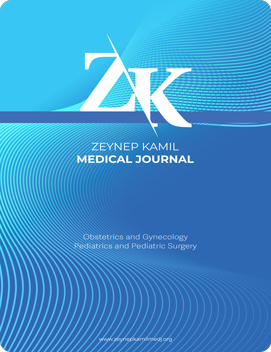Quick Search
Evaluation of first-trimester hematological indices in preeclampsia: A retrospective observational case-control study
Esra Keleş1, Leyla Kaya2, Pınar Kumru3, Zahide Kaya41Department of Gynecologic Oncology, University of Health Sciences, Kartal Dr. Lutfi Kirdar City Hospital, Istanbul, Turkey2Department of Midwifery, University of Health Sciences Faculty of Health Sciences, Istanbul, Turkey
3Department of Obstetrics and Gynecology, University of Health Sciences, Turkey. Istanbul Zeynep Kamil Maternity and Childrens Diseases Health Training and Research Center, Istanbul, Turkey
4Internal Medicine Clinic, Uskudar State Hospital, Istanbul, Turkey
INTRODUCTION: Preeclampsia (PE) is one of the leading major causes of maternal and neonatal mortality and morbidity. Improving the outcome for preeclampsia necessitates early prediction of the disease to identify women at high risk. Evaluation of hematological parameters might provide prognostic and diagnostic clues to diseases. The purpose of this study is to investigate hematological changes in early pregnancy using complete blood counts in order to determine whether these measurements may provide useful information for the early diagnosis of preeclampsia.
METHODS: This retrospective observational casecontrol study was conducted at a tertiary referral center between August 2020 and February 2022. Medical records of women with preeclampsia and healthy controls were compared regarding clinical characteristics and first-trimester hematological parameters. Receiver operating characteristic curve analysis was performed to identify the optimal white blood cells level predicting preeclampsia.
RESULTS: The white blood cells (WBC) values were significantly higher in the preeclampsia group compared with the control group (p<0.049). There were no significant differences in other hematological parameters between the groups. For WBC, the values of area under the curve were 0.605, and the p-value for this parameter statistically differed (p=0.049).
DISCUSSION AND CONCLUSION: This study showed that WBC may be a useful marker in the prediction of preeclampsia in early pregnancy.
Manuscript Language: English
















